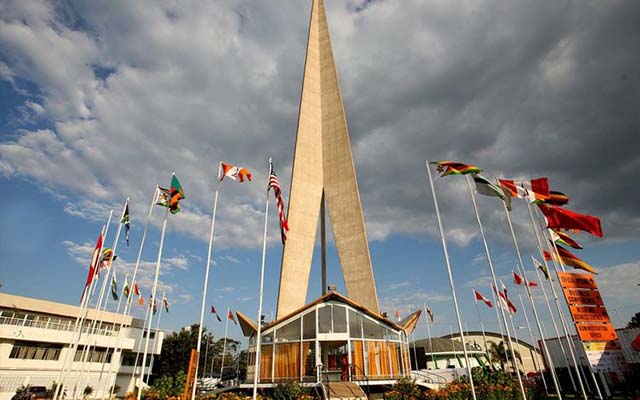Inflation for June at -2,81pc

Business Reporters
THE decline in prices in the economy reflects general correction of high prices that prevailed during hyperinflationary era, technically known as disinflation and it is not entrenched economic crisis of deflation, economic experts have said.
This comes after annual inflation for the month of June 2015 as measured by the all items Consumer Price Index stood at -2,81 percent shedding 0,11 percentage points on the May 2015 rate of -2,70 percent, deceleration driven mainly by food inflation.
The Zimbabwe National Statistics Agency said that means the prices as measured by the all items CPI decreased by an average of -2,81 percentage points between June 2014 and June 2015.
Bankers Association of Zimbabwe president Mr Sam Malaba last week forecast headline inflation to remain negative through May-June 2016 barring a major price shock.
The year-on-year inflation rate is given by the percentage change in the index of the relevant month of the current year compared with the index of the same month in the previous year.
The year-on-year food and non-alcoholic beverages inflation prone to transitory shocks stood at -3,32 percent while the non-food inflation rate was -2,57 percent.
The BAZ chief said the major driver of overall inflation deceleration has been food inflation — now in consecutive decline for over 12 months.
“Local firms in the food sub-sector are increasingly facing thinning margins against the background of intense competition from imports.
“Processed food imports constitute a dominant share of the manufactured imports — in excess of $1,1 billion per year since 2012,” said Mr Malaba.
IMF resident representative Mr Christopher Beddies recently said that there is an element of both deflation and disinflation in the economy given the slowdown on the economic activity
“There is a big debate ongoing what is actually happening to inflation – do we have deflation or do we have disinflation?
“I think there is an element of both in the economic given the slowdown on the economic activity,” the IMF representative said, adding that “but on balance disinflation is the prevailing argument this time, which still means the central bank is having a close eye on inflation developments.”
Mr Beddies said that Zimbabwe was experiencing “general a correction of prices from the hyperinflation era to prevailing stable macro-economic environment. It has related led to the availability of goods in our grocery stores and informal sector,’ he said.
Mr Beddies said that there had been an improvement in transactions that help to reduce prices, which included the availability of smaller change due to introduction of bond coins.
“Now you can buy two bananas for a coin and not five or six for a dollar.”
He also attributed prevailing general fall in prices to weak effective demand resulting from falling production, closure of companies and retrenchments among others. This and poor performance growth in agriculture is projected to affect projected growth in Zimbabwe, which may see IMF revising its 2,8 percent growth.
He said manufacturing sector remained under intense pressure with only beverages, clothing and construction showing positive signs of growth and recovery.
In light of the difficult economic environment, Mr Beddies said, the mitigating factors included better performance in the mining sector, signs of improving capacity utilisation; lately, financial sector reforms and economic stability and lower prices.
Opportunities in the economy included potential for strong agricultural performance spin off from ongoing initiatives (labour law reforms, joint venture Bill, industry protective windows and re-engaging the international community (EU, IMF, WB).
Risks included the possibility of continued decline in prices, challenging fiscal situation, challenges in policy implementation, continued strengthening of the dollar, further worsening of liquidity situation due to rising imports and the debt situation.
Challenges that still remain entrenched in the economy, Mr Beddies said, included investment climate and issues of ease of doing business, company failures, and weak demand.
The month-on-month inflation rate in June 2015 was -0,14 percent gaining 0,05 percentage points on the May 2015 rate of -0,19 percent.
This means that prices as measured by the all items CPI decreased at an average rate of -0,14 percent from May 2015 to June 2015.
The month-on-month inflation rate is given by the percentage change in the index of the relevant month of the current year compared with the index of the previous month in the current year.
The month-on-month food and non-alcoholic beverages inflation rate stood at -0,45 percent in June 2015, shedding 0,08 percentage points on the May 2015 rate of -0,37 percent.
The month on month non-food inflation rate stood at 0,01 percent, gaining 0,11 percentage points on the May 2015 rate of -0,10 percent.
The CPI for the month ending June 2015 stood at 97,90 compared to 98,03 in May 2015 and 100,73 in June 2014.











Comments